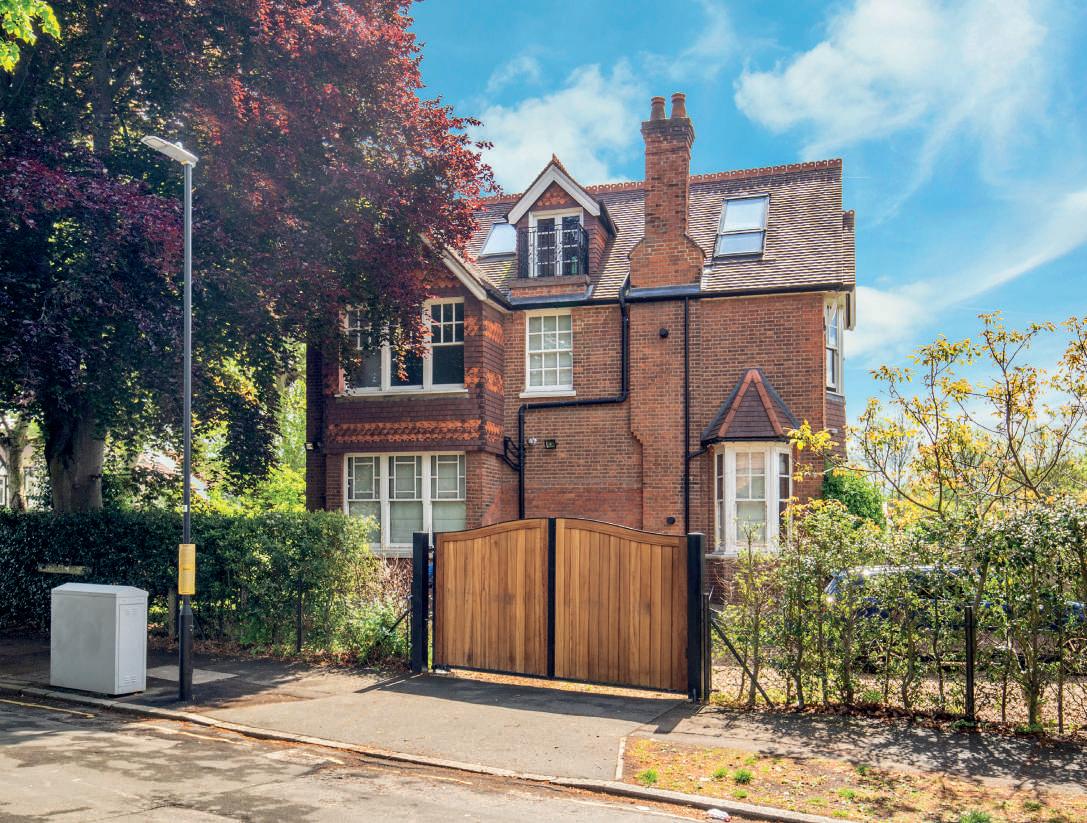
4 minute read
VOLUME OF LETTINGS UP 52%
An astonishing twelve months have seen our teams notch up record volumes as social changes push demand higher than ever. Amongst the turmoil, two other facts stand out: almost all the demand is home-grown, and both capital values and rents have proved remarkably stable.
The pandemic cut visits to London from overseas to, at times, near zero. Heathrow has reported a 73% drop in passenger numbers for 2020. Other London airports, more reliant on tourists, will have fared even less well. Given the degree to which overseas demand for London property used to dominate, you could be forgiven for assuming that the overall number of property transactions would be dramatically lower than usual. Indeed, for holiday lets, you’d be correct: lettings of London properties listed with Airbnb (numbering over 87,000) collapsed, pushing landlords into the longer term market. In every other category however – longer lets and sales of all kinds of property, including pieds-à-terre with no outside space – volumes are up, to an extraordinary degree. This reflects the turmoil in home and office life and the constantly shifting extent to which Londoners expect pre-pandemic ways, to return. That turmoil also explains the stability in values: supply and demand have risen, more or less, in step. Capital values, are up. This suggests that the market will cope well with the end of the stamp duty holiday and the introduction, also on 1 st April 2021, of an additional 2% stamp duty for foreign buyers –taking their marginal rate above £1.5 million, to 17%.
ZERO VOIDS & ’REAL-TIME RENTS’
The rental market is naturally more fluid than the sales market, so quicker to respond. Moves in and out of lockdowns have thus seen fluctuations, creating opportunities for landlords and tenants alike. For both though, an empty property is simply a waste, a lost opportunity. To minimise voids, we monitor trends across our portfolio, daily. This encompasses thousands of properties. We then cross-reference those trends with daily reports from our local teams. The result is near real-time, empirical evidence, of patterns in supply and demand. It showed us, for example, that when a second lockdown looked likely, the majority of tenants giving notice were not leaving London, but moving locally, to a larger home. It showed us that stable
Opposite page: Dorsted Road SW19 £8,500pm (Wimbledon)
Below: Weybridge £2,250,000 guide (Weybridge) demand for smaller central London apartments, was about to be more than matched by a flood of newly available properties, courtesy of the nonexistent holiday let market. Such information enables us to calculate the best rent and term achievable for any given property on any given day, securing almost zero voids, on the most commercially viable terms.


OUTLOOK: RESILIENCE OF A 24HR CITY
Belatedly recognising the strength of a diverse economy, the chief executive of Canary Wharf
Group said early this year * that he wanted the Docklands financial office district to become a “ 24/7 city where people live, work and play ”, with a thorough mixture of different kinds of businesses and many more residents. Happily, the resilience and sheer attractiveness of non ‘single function districts’ is something of which central and other London areas have long been aware. Estates such as Grosvenor and Portman have actively promoted this model by, for example, ensuring small independent shops valued by residents have affordable rents, and by making streets and green spaces more practical for families with young children. Even the City – having experienced the ‘offices only’ route – has encouraged a trend towards a larger resident population, resulting in 79% growth since its admittedly tiny 20th century low of under 6,000. Pre-Covid, its daily commuters exceeded 500,000.
Recent times have been difficult, but the changes happening as a result include many positives which will enhance London life. To encourage employees back, offices are being made more attractive and (partly to allow for a measure of permanent social distancing) less densely packed. The pressure on peak commuting times, strained by outer London population growth even greater than the 14% average ** of the last decade, looks unlikely to return to pre-pandemic extremes, making travel more pleasant. And, everywhere, we have noticed a greater appreciation of local community.
The confidence that such factors instil is fuelling the increase we are seeing now in new purchases by landlords and the readiness with which UKbased individuals are buying and renting. We expect capital values to remain stable and rise modestly over the coming year. Rents are harder to predict. Especially in outer areas, they will be affected a little by when credit restrictions on first time buyers, are eased. Stepped-up during the frantic market of 2020, they forced many to keep renting. They will buy as soon as they can, reducing demand. A bigger factor, though, is the holiday market. We’re working hard to show all those former Airbnb landlords just how much easier and simpler life is, in the longer term market. Even so, an inevitable shortage of holiday lets will one day tempt some back, creating a broad upward pressure. When mass tourism will return, however, is anyone’s guess.
Forced 990 Year Lease Extensions
Following recommendations from the Law Commission, the government has announced that “ Millions of leaseholders will be given the right to extend their lease by a maximum term of 990 years at zero ground rent ” (Housing Secretary Robert Jenrick, 7/1/21). There is little doubt the mere promise of this reform has already deterred most new house builders from inserting terms which, notoriously, allowed ground rents to double every few years.
As well as eliminating ground rents, the Law Commission proposals include forcing freeholders to extend leases to 990 years (instead of 90) and to accept a price for that extension calculated in a new way that is much more favourable to leaseholders. An example given by the Law Commission reduces the payment required by 40%. If such rules applied to the central London estates – where many leases are below 80 years and marriage values can run into millions – the long-term effects could be dramatic. However, much detail has to be worked out and the government has yet to indicate when the new legislation might become law (suggesting it will be at least two years). If your lease is approaching the 80 year mark, do not delay.
*FT, 11/1/21
**UN / Mayor of London
Opposite page: Suffolk £1,100,000 (Ipswich)
Lovingly restored to preserve its extraordinary history and atmosphere, this Grade II listed house with medieval origins dates mainly from around 1592.







